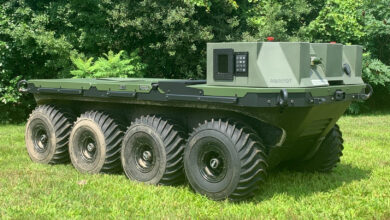Australian aerospace company Hypersonix Launch Systems has signed a contract to deliver hypersonic test vehicles to the US Defense Innovation Unit (DIU).
The agreement supports the Hypersonic and High-Cadence Airborne Testing Capabilities (HyCAT1) program, a prototyping effort to source “modern, low-cost, high-cadence, and dual-use” aerial platforms for rapid maturation of US hypersonic research and development.
Hypersonix DART AE
Under the contract, Hypersonix will deliver its DART AE (Additive Engineering) demonstrator, an entirely 3D-printed vehicle equipped with a Spartan scramjet engine and a 20-pound (9 kilograms) capacity modular payload bay.
The three-meter (9.8 feet) aircraft flies along a non-ballistic trajectory up to 1,000 kilometers (621 miles).
It can reach speeds from Mach 5 to 7 (6,000 to 8,600 kilometers/3,900 to 5,300 miles per hour).
“Our vehicles are capable of non-ballistic flight patterns to at least Mach 7, which exceeds the HyCAT1 specification,” Hypersonix Launch Systems Managing Director David Waterhouse stated.
“Our longer-term focus is to capture a slice of the emerging multi-billion-dollar commercial market for deployment of small satellites, but clearly Australia’s strategic defence allies see immediate potential in our technology.”
“This is our first major contract and a key step in our commercialisation process – we couldn’t be happier. This puts Australia one step closer to being a major player in the international space race.”
‘A Paradigm Shift’
HyCAT1 is being carried out with the US Air Force and the Under Secretary of Defense for Research & Engineering.
As part of the program, DART AE will obtain data for hypersonic systems, concepts, and mission sets evaluations.
The vehicle is scheduled for launch early next year.
“Commercial companies are forging ahead towards reusable and low-cost test vehicles,” DIU Space Program Manager Maj. Ryan Weed said.
“The HyCAT project represents a paradigm shift in viewing the hypersonic realm as a place for aircraft, not just missiles and weapons.”












